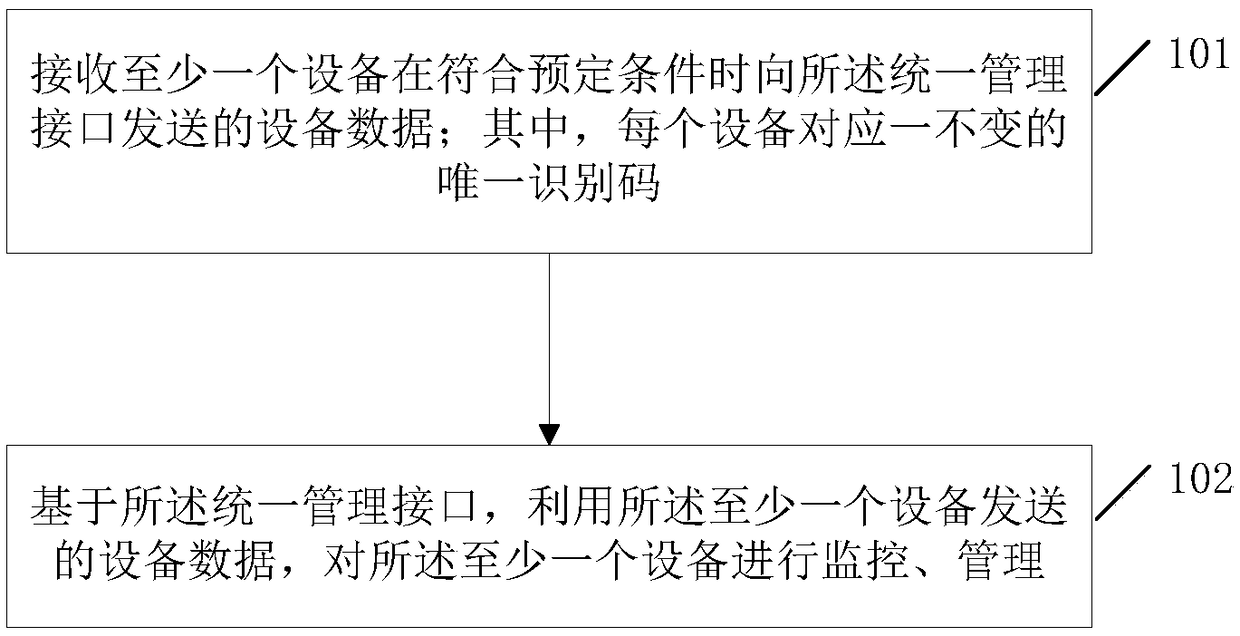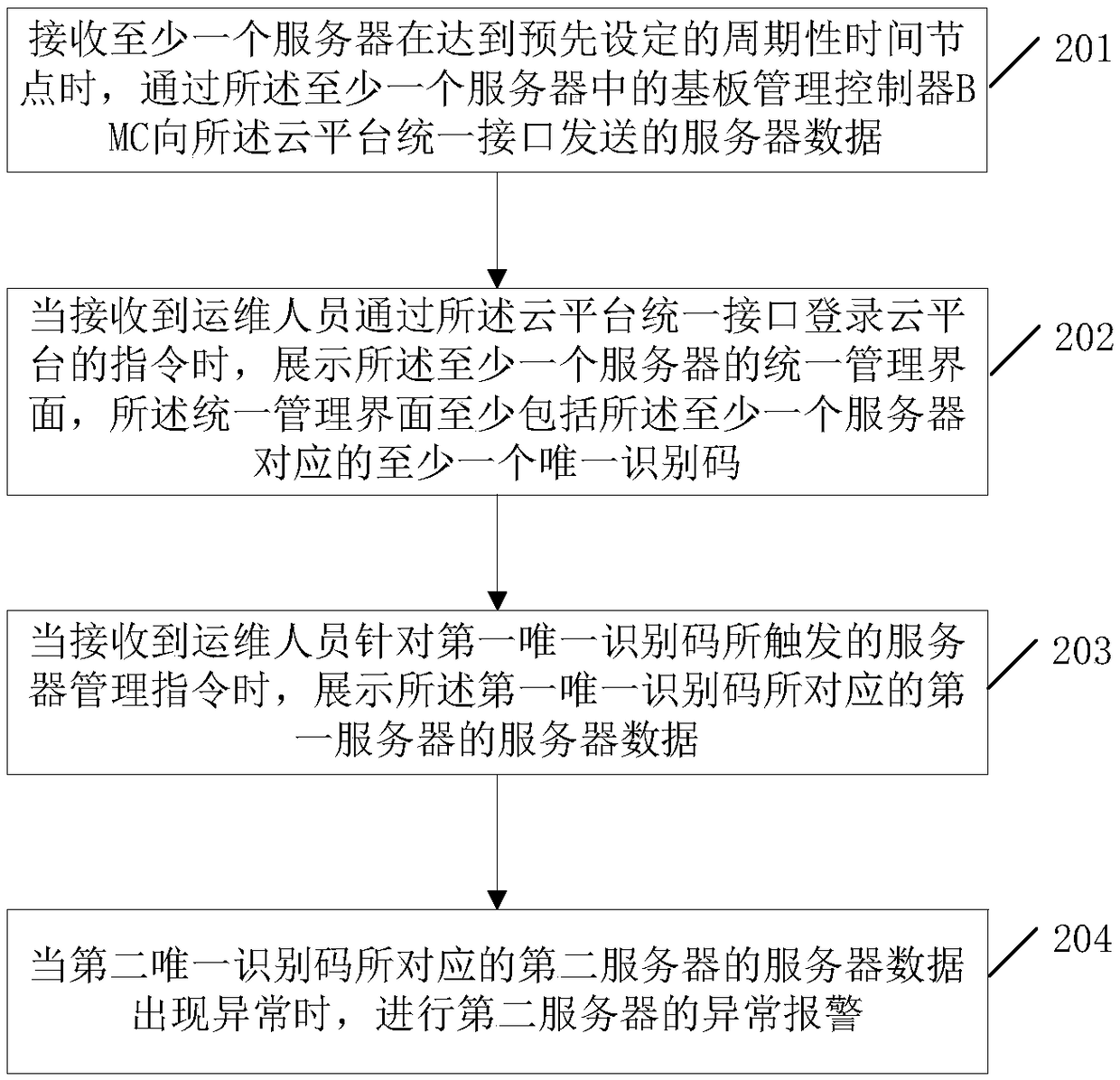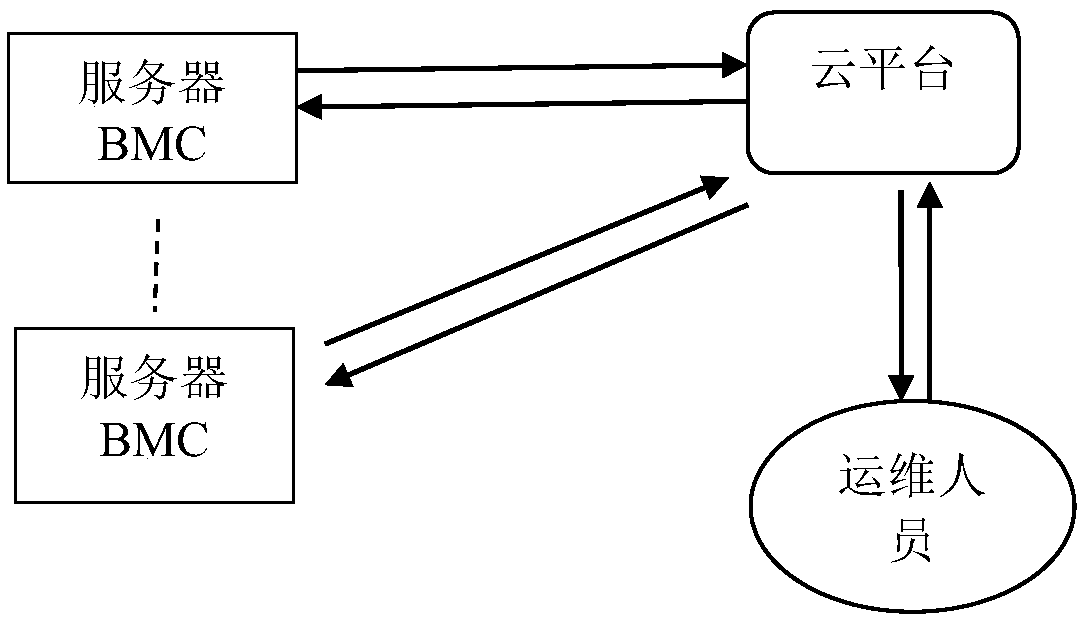Equipment management method and equipment management platform
An equipment management platform and equipment management technology, applied in digital transmission systems, data exchange networks, electrical components, etc., can solve problems such as insufficient management methods, inconvenient work for operation and maintenance personnel, and increased workload for operation and maintenance personnel. The effect of convenient login
- Summary
- Abstract
- Description
- Claims
- Application Information
AI Technical Summary
Problems solved by technology
Method used
Image
Examples
Embodiment Construction
[0047] The following will clearly and completely describe the technical solutions in the embodiments of the present invention with reference to the accompanying drawings in the embodiments of the present invention. Obviously, the described embodiments are only some, not all, embodiments of the present invention. Based on the embodiments of the present invention, all other embodiments obtained by persons of ordinary skill in the art without making creative efforts belong to the protection scope of the present invention.
[0048]In order to reduce the workload of operation and maintenance personnel when monitoring and managing each server node, this application provides a device management method and a device management platform. The device management method and device management platform of this application will be described below through multiple embodiments. illustrate.
[0049] refer to figure 1 , is a flow chart of Embodiment 1 of a device management method provided by the...
PUM
 Login to View More
Login to View More Abstract
Description
Claims
Application Information
 Login to View More
Login to View More - R&D
- Intellectual Property
- Life Sciences
- Materials
- Tech Scout
- Unparalleled Data Quality
- Higher Quality Content
- 60% Fewer Hallucinations
Browse by: Latest US Patents, China's latest patents, Technical Efficacy Thesaurus, Application Domain, Technology Topic, Popular Technical Reports.
© 2025 PatSnap. All rights reserved.Legal|Privacy policy|Modern Slavery Act Transparency Statement|Sitemap|About US| Contact US: help@patsnap.com



